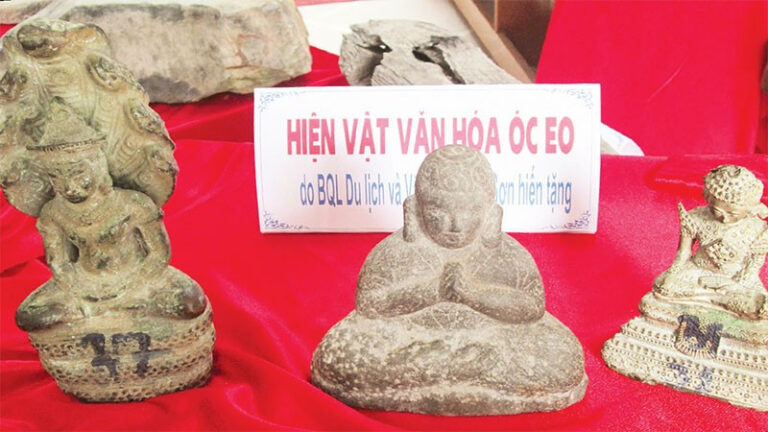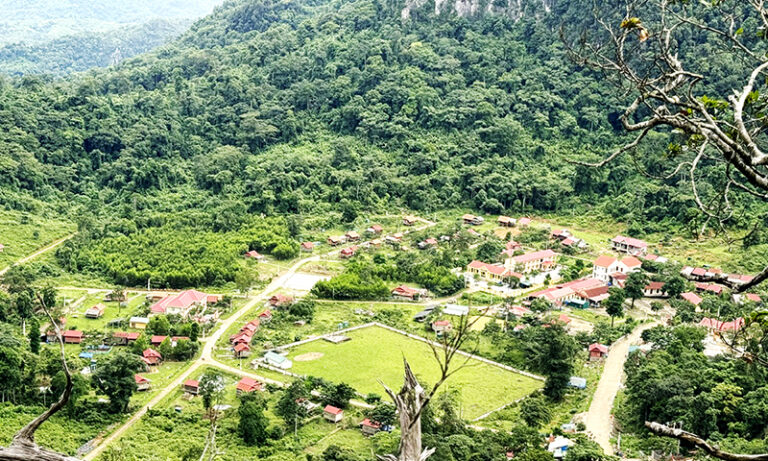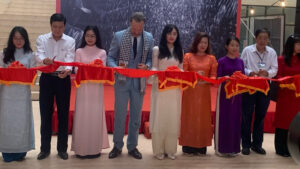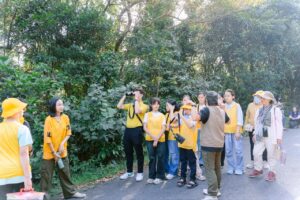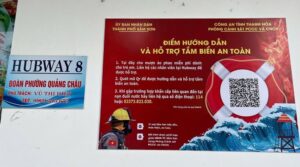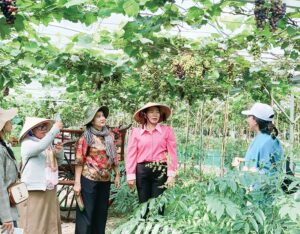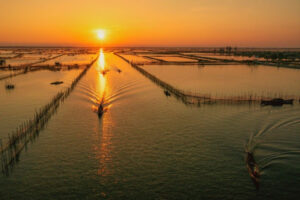Considered a miniature Ha Giang Province with rocky terrain, winding steep passes, and majestic natural scenery, Tua Chua District in the northwest mountainous province of Dien Bien boasts rich potential and advantages for tourism development.

Muong Bang rice field in the resettlement village of Huoi Luc. (Photo Khieu Minh)
Ethnic communities of Mong, Thai, and Dao in the locality have promoted their indigenous culture and developed homestay business to better serve tourists to the province.
Developing homestay experience
Huoi Luc Village, Muong Bang Commune, is located right next to downtown Tua Chua District. There, families of Mong, Thai, and Kinh ethnic groups live together in wooden stilt houses, which were built along both sides of the road in the village.
Huoi Luc is the resettlement village of households who gave their land for the building of Son La Hydropower Plant 18 years ago.
At the end of 2006, households in areas bordering Da River moved to new residential areas, including Huoi Luc Village in Muong Bang Commune and the villages of Huoi Trang, Ta Si Lang, and Ta Huoi Trang in Tua Thang Commune.
Of them, 80 households moved to Muong Bang Commune and established the new Huoi Luc Village.
In the first days after moving to a new land, people inevitably faced difficulties in farming and household economic development.
The government focused on bringing electricity; building roads, schools, community houses, and medical establishments; and providing housing and productive land to the people.
Thanks to the support of the State and the efforts made by local people work together, difficulties have been gradually removed. Infrastructure in the village has been upgraded and the local livelihoods have been improved.
Currently, Huoi Luc Village is home to 158 households, mainly working in agriculture. In recent years, in response to the call of the Department of Culture and Information of Tua Chua District, five households have started doing community-based tourism.
One of the vanguard household in doing tourism in the village is the homestay of Lu Van La. In early 2022, La completed the construction of Pi Noong Homestay, which was built in the traditional architectural style of a Thai ethnic house, with a view facing lush rice fields.
The homestay can accommodate 21 people, serving both domestic and foreign tourist groups.
Explaining about the name of his homestay, La shared that in Thai ethnic language, “Pi Noong” means “brotherhood”. It is also his motto of doing business, by welcoming the participation of all villagers and creating jobs for neighbours.
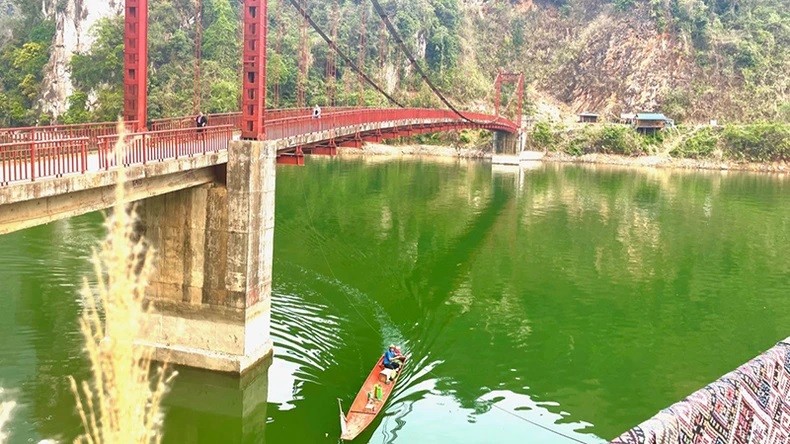
Da River flows through Tua Chua District (Dien Bien).
New vision for community-based tourism
Huoi Luc Village is located at the starting point of the journey to the south of Tua Chua District. The journey connects many beautiful places and learn about the cultural identities of ethnic groups.
The basket-shaped road stretches about 100 km from Muong Bang Commune to Sinh Phinh Commune, travelling through the communes of Xa Nhe, Muong Dun, Tua Thang, and Huoi So, with enchanting scenery along the emerald green Da River.
Tourists can visit Kho Chua La Cave, and Xa Nhe Market in Xa Nhe Commune, and take a boat trip on Pa Phong Bay to admire the red bridge across Da River, before heading to Xin Chai Commune, where thousands of ancient Shan Tuyet tea trees are located. It is said that people have to climb on ladders to pick tea leaves on the trees.
They can also go to local market in Ta Sin Thang Commune, the Ta Phin ancient stone plateau, and Thanh Vang Long Palace - an ancient cultural heritage of the Mong people.
From Ta Phin Commune, the two days one night journey will continue through the pine forests in Trung Thu Commune, then pass through Sinh Phinh Commune and return to Tua Chua Town.
Following Lu Van La’s example, many households in Huoi Luc Village have renovated their houses to welcome guests. In addition to serving meals and sleeping services, they also work to develop sightseeing tours and improve service quality to encourage tourists to stay more and spend more during their stay.
To support his father’s business, Lu Thi Pung, Lu Van La’s daughter, advertises Pi Noong Homestay on social platforms in order to reach more customers.
Lu Van La's family also runs a food stall at Tua Chua night market, which opens every Saturday night to promote Thai ethnic specialties such as Thang Co (horse meat hotpot), grilled chicken, and ‘mong pe’ wine.
Despite difficulties while changing their living place, Huoi Luc villagers are actively changing their thinking, and promoting their ethnic cultural identity to develop community-based tourism.
Ngoc Lien - Translated by NDO


